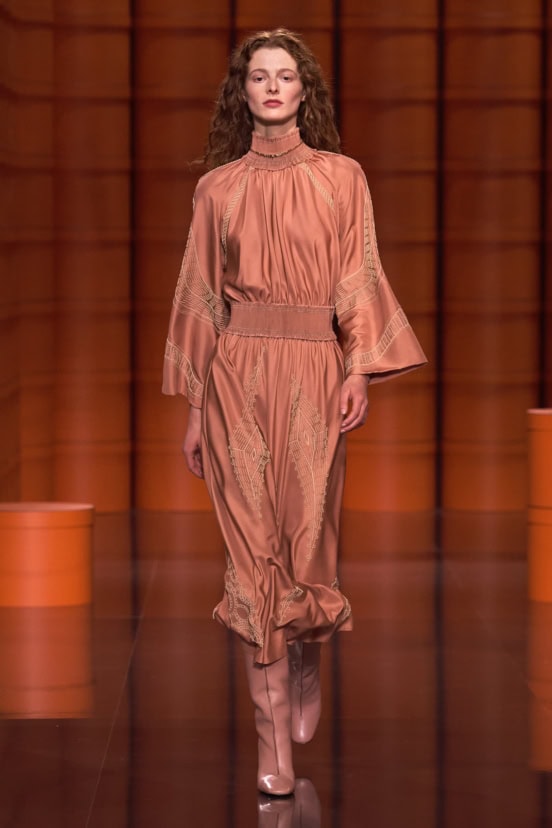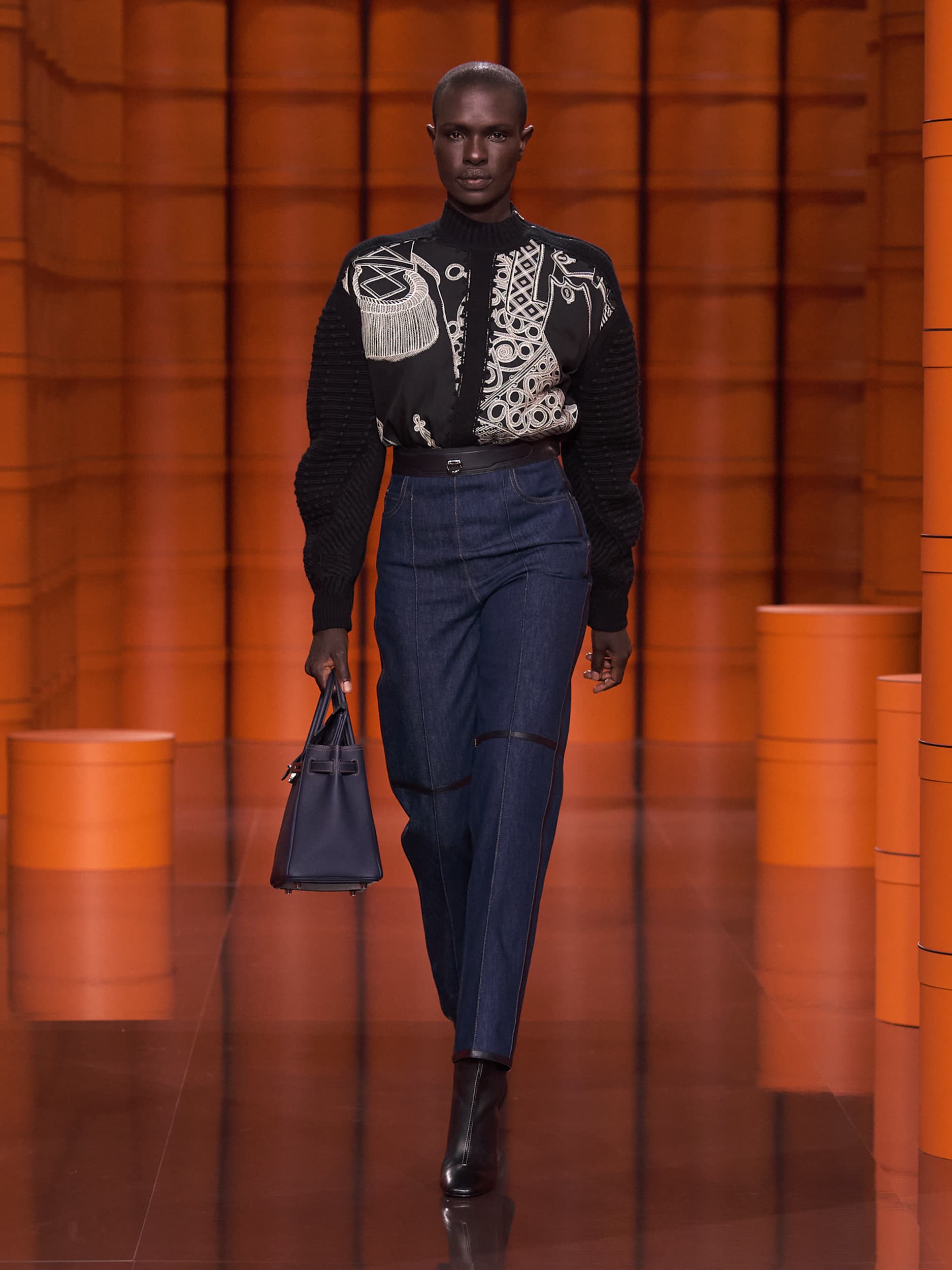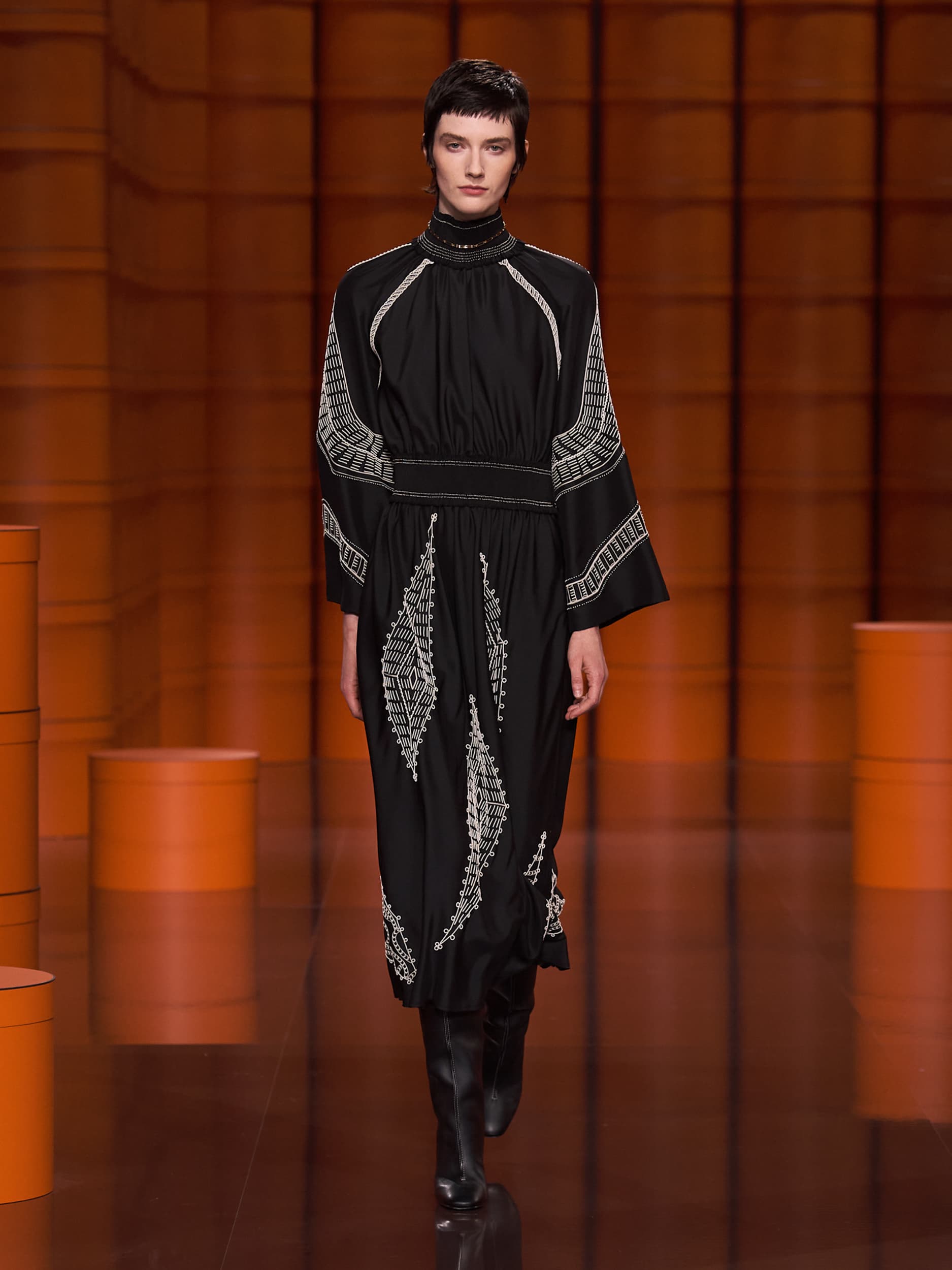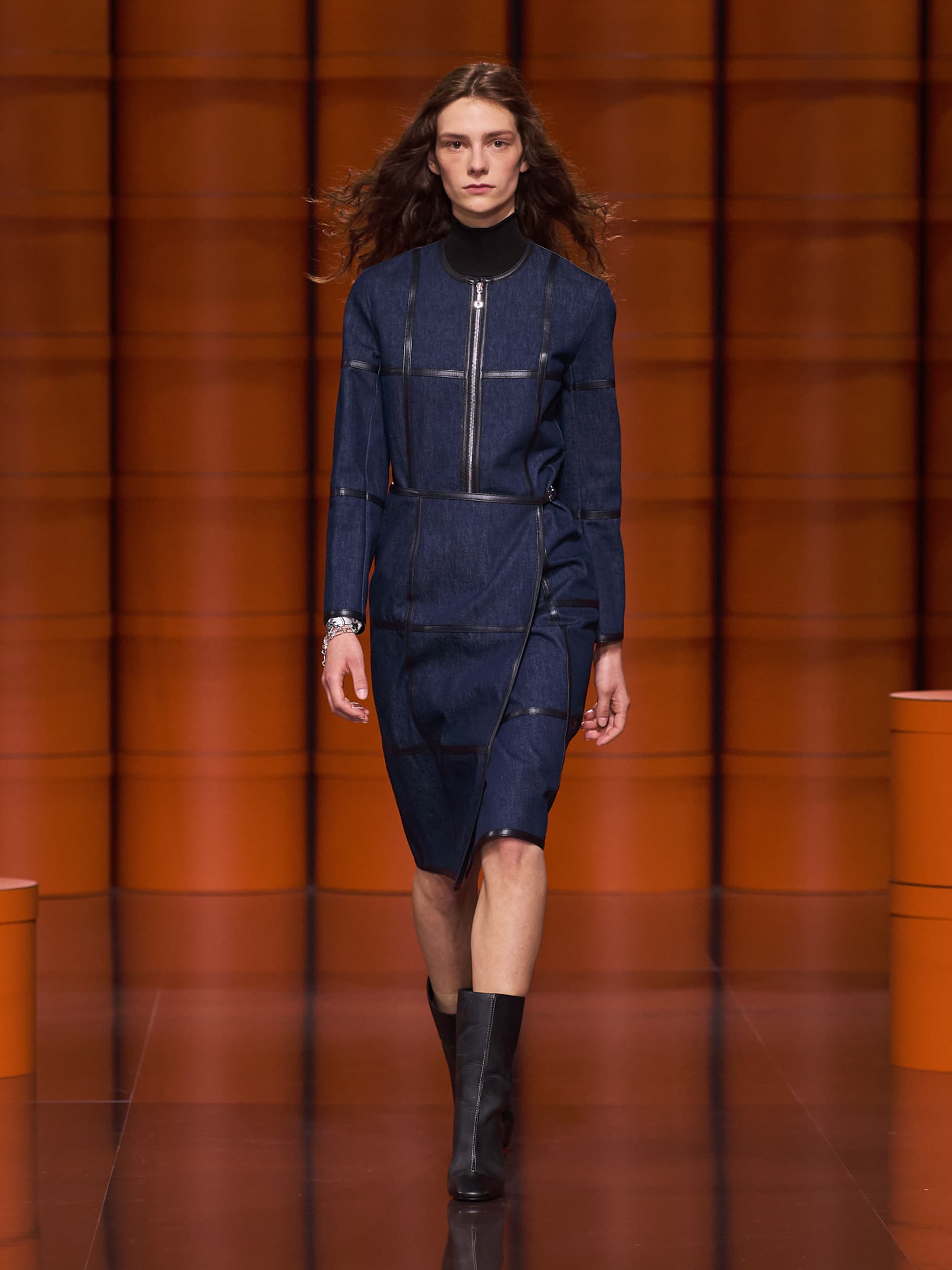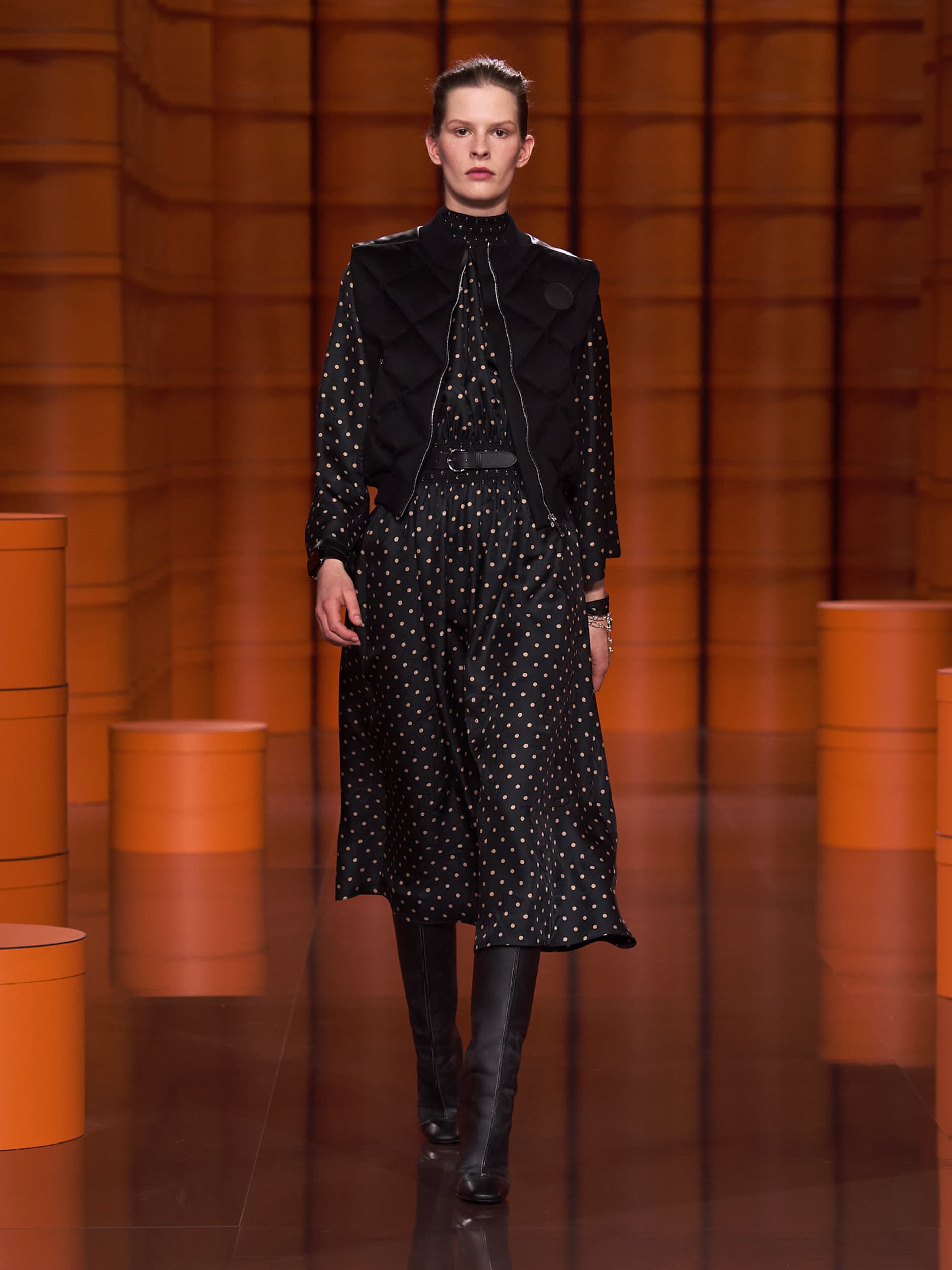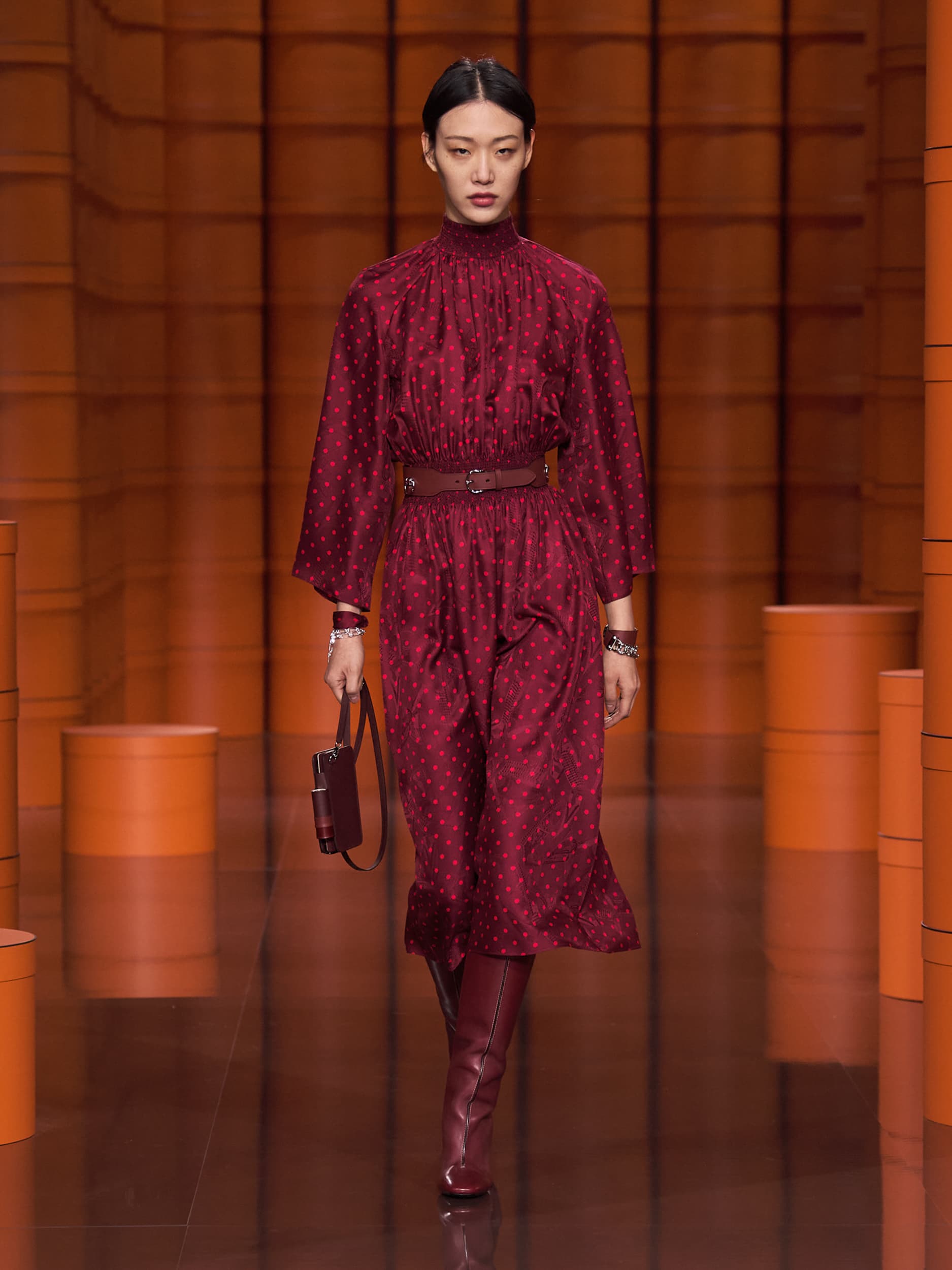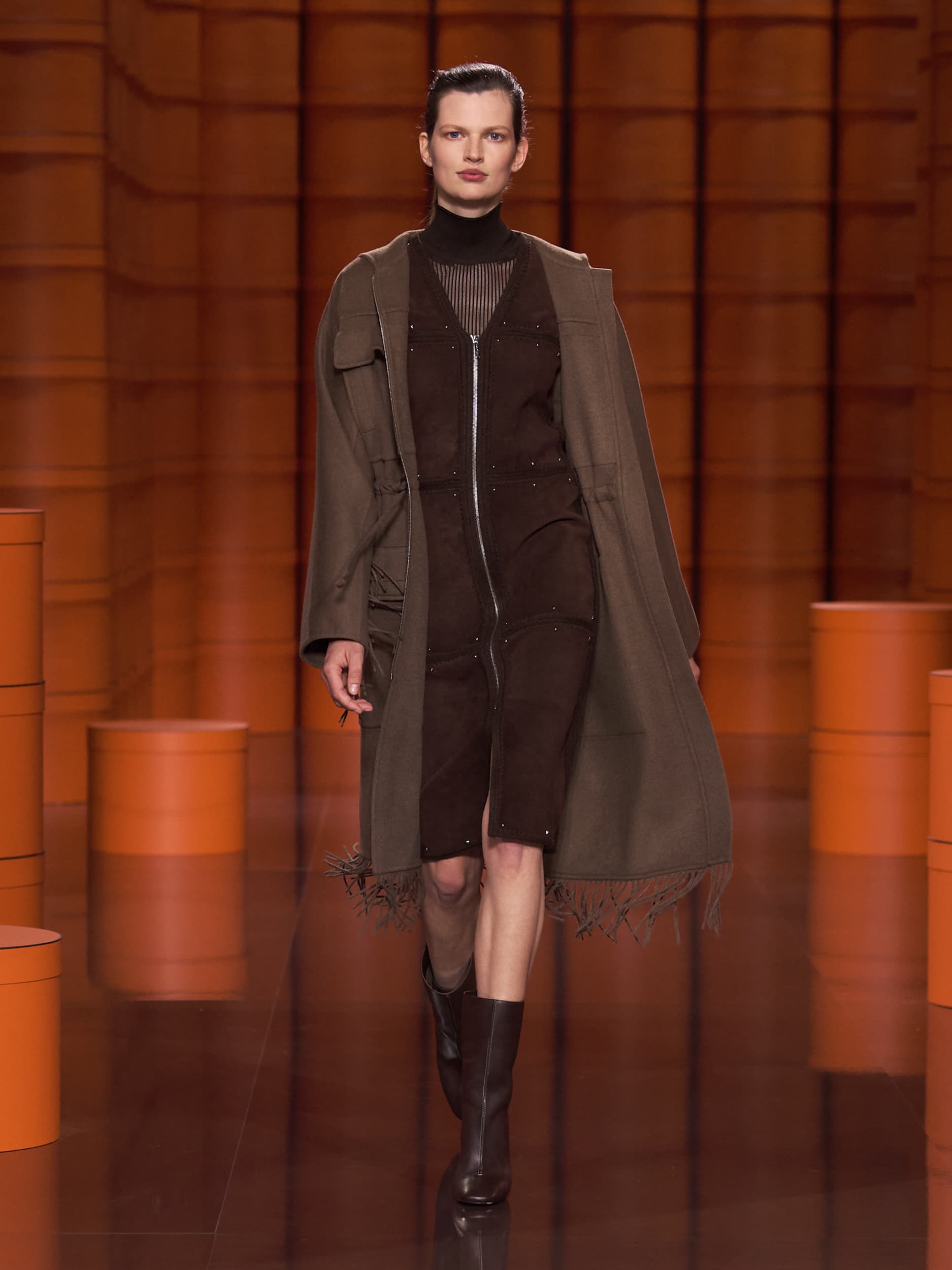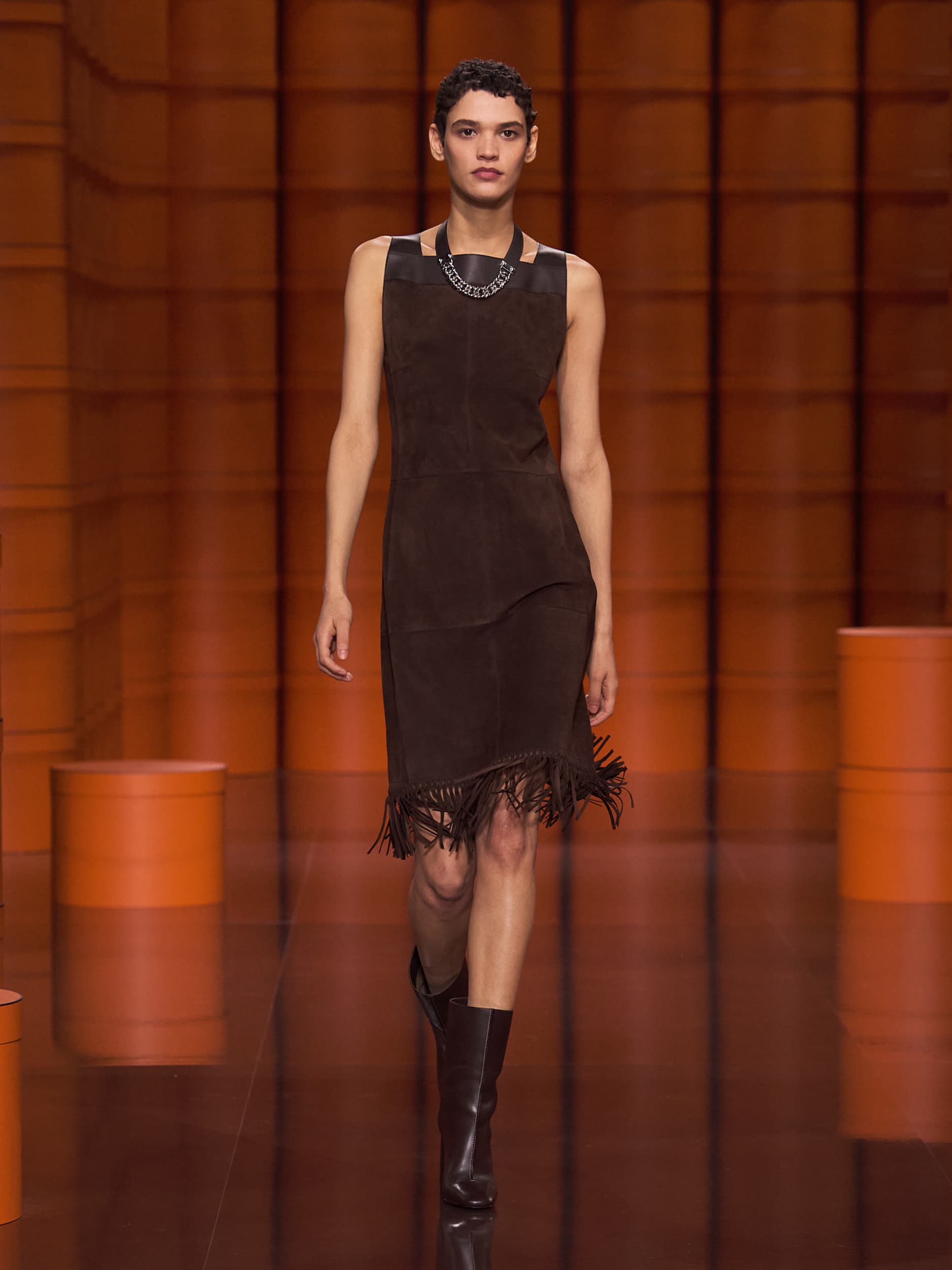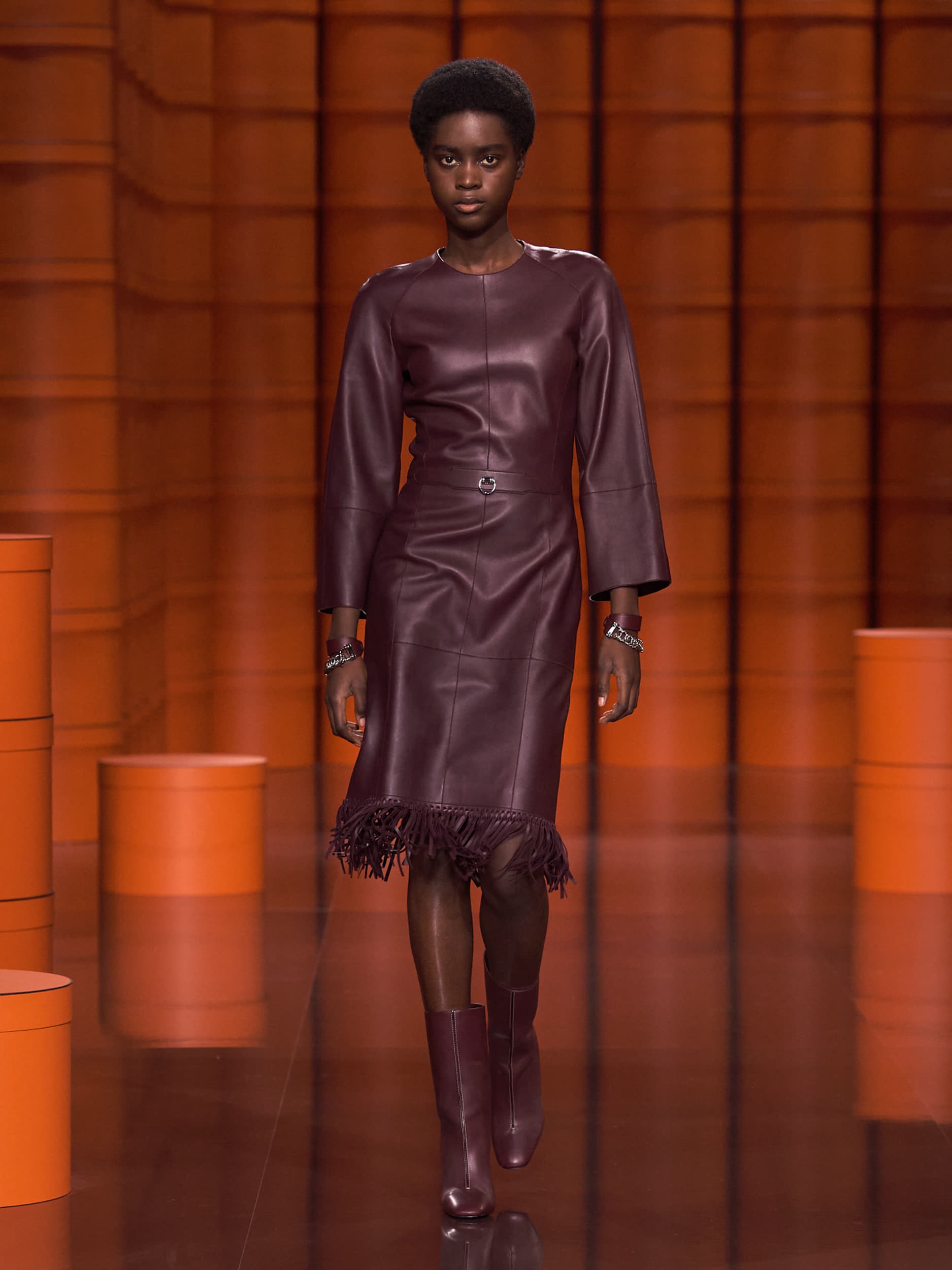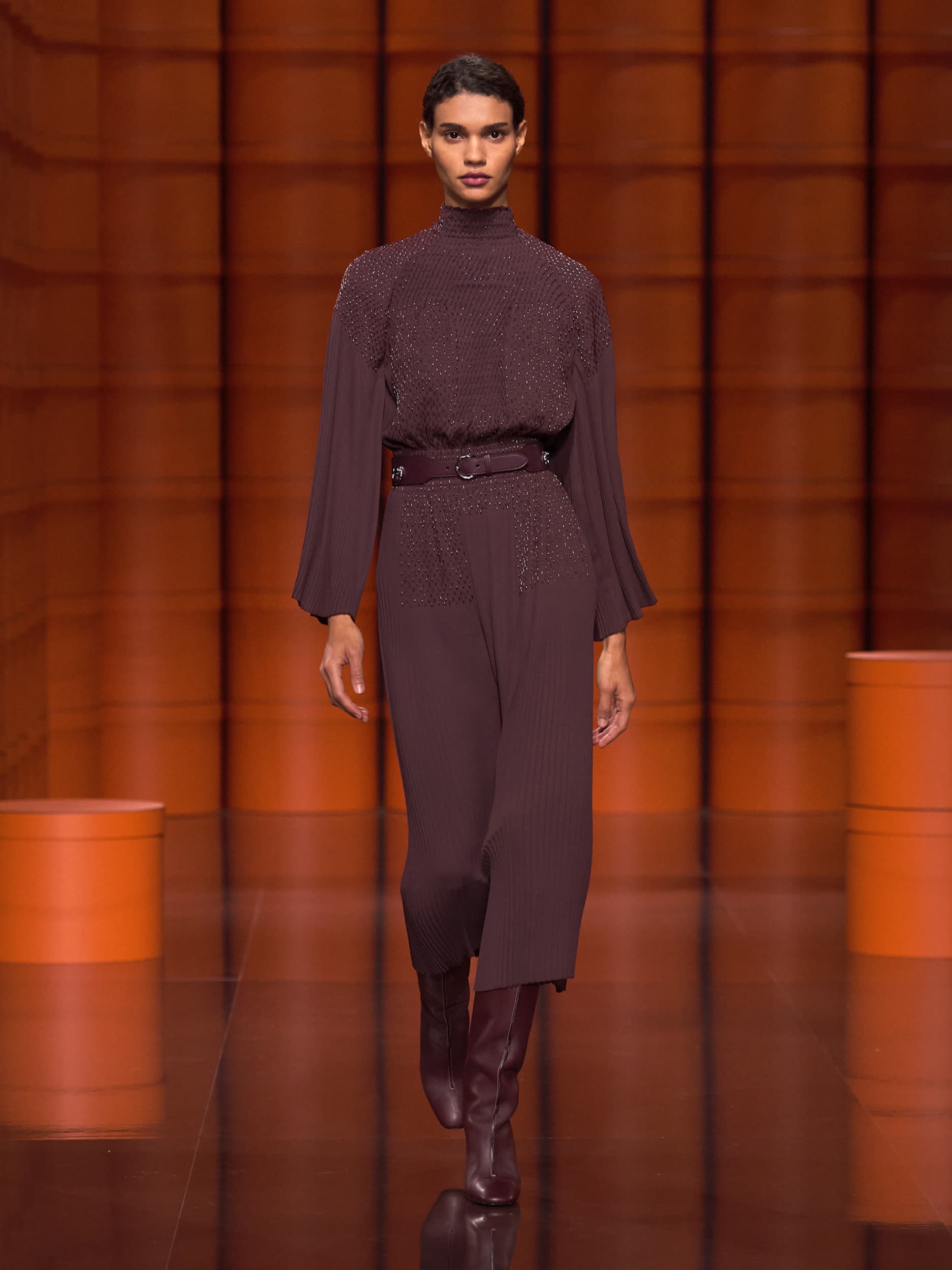Review of Hermès Fall 2021 Fashion Show
In a Triptych Spanning Three Cities, Movements and Crafts Define Fashion at Hermès
By Long Nguyen
“Starting a collection feels almost sacred. It’s a ritual. A new chapter, a fresh start,” said Nadège Vanhée-Cybulski, the Hermès artistic director for womenswear, in the opening scene of Triptych. The documentary director Sébastien Lifshitz made this short film as part of the visual record of making this fall 2021 collection, shown live stream successively from three cities – New York, Paris, Shanghai.
This fall collection three segments show commenced with the early morning curtain call from the Park Avenue Armory with a performance choreographed by the American artist Madeline Hollander, then to the Paris fashion show at the Garde Républicaine, and ending in Shanghai at night with the groundbreaking choreographer Gu Jiani and her dancers at the Hermès house.
I am interested in the relationship between clothes, bodies, and attitudes. I had been fascinated by Madeline’s choreography, ’52 Final Bows’, which was the inspiration for the curtains. My collaboration with Gu Jiani was predicated on the physical. In contrast, Madeline’s approach is more theoretical: the project’s conceptual basis and its structure are revealed in her work. The difference of those two approaches inspired the collection as it was being made.
– Nadège Vanhée-Cybulski, Hermès Womenswear Artistic Director
Dancers at the Park Avenue Armory walked in a circular motion around sets of the orange curtain hung from the ceiling in circular orange shapes with three-quarters closures. One dancer opened the sequence, and around the circular corner, another and another joined the group, all wearing chocolate brown knit turtleneck with the long skirt and dark brown leather boots.
“Each of the sequences is based on the heartbeat of how New Yorkers move through the city. Every single sequence begins with a forward walk. Then we start adding and subtracting things, adding gestures, some flair, and things we’ve seen on the streets and in fashion shows, and things that are particular to the clothing themselves,” Madeline Hollander said in the documentary during a rehearsal.
“With the samples, I got to work with the dancers and experiment with different types of walks and movements and sequences and gestures and see what work best with that particular cut or material or line. The clothing itself very much choreographed the process of sculpting these sequences,” the choreographer spoke about how the clothes themselves became the guide to her choosing all the sequences.
“I tried to couple movements rooted in Chinese culture with elements of ballroom dancing – I want to explore what comes out of the encounter between the toughness and tenderness in the dancers’ movements, what language emerges from the exchange, said Gu Jiani. Her four dancers, dressed in black leather pants and black and white knit sweaters, performed acrobatic and rapid movements, pushing and evading the series of rectangular wooden boxes on the floor around them. “This project features only female dancers to show the strength of women. To depict that strength, I asked them to perform challenging movements, including some taken from Bagua,” Gu said.
In the documentation that recorded the planning conversations between Vanhée-Cybulski, Hollander, and Gu, this undertone of how much the designer is willing to relinquish to allow the two invited artists to work freely. The only real impositions are the color palettes since they have been chosen in advance.
This triptych performance sure is a new way of seeing clothes and a new way to perceive what the clothes can mean. It also positions fashion in another realm of culture.
The immediacy of the runway staging format is not the only platform to show these clothes. Here is to create a human dimension by capturing the clothes in movement as if they were alive and were an essential part of the creation of these dance movements from both the choreographer artists.
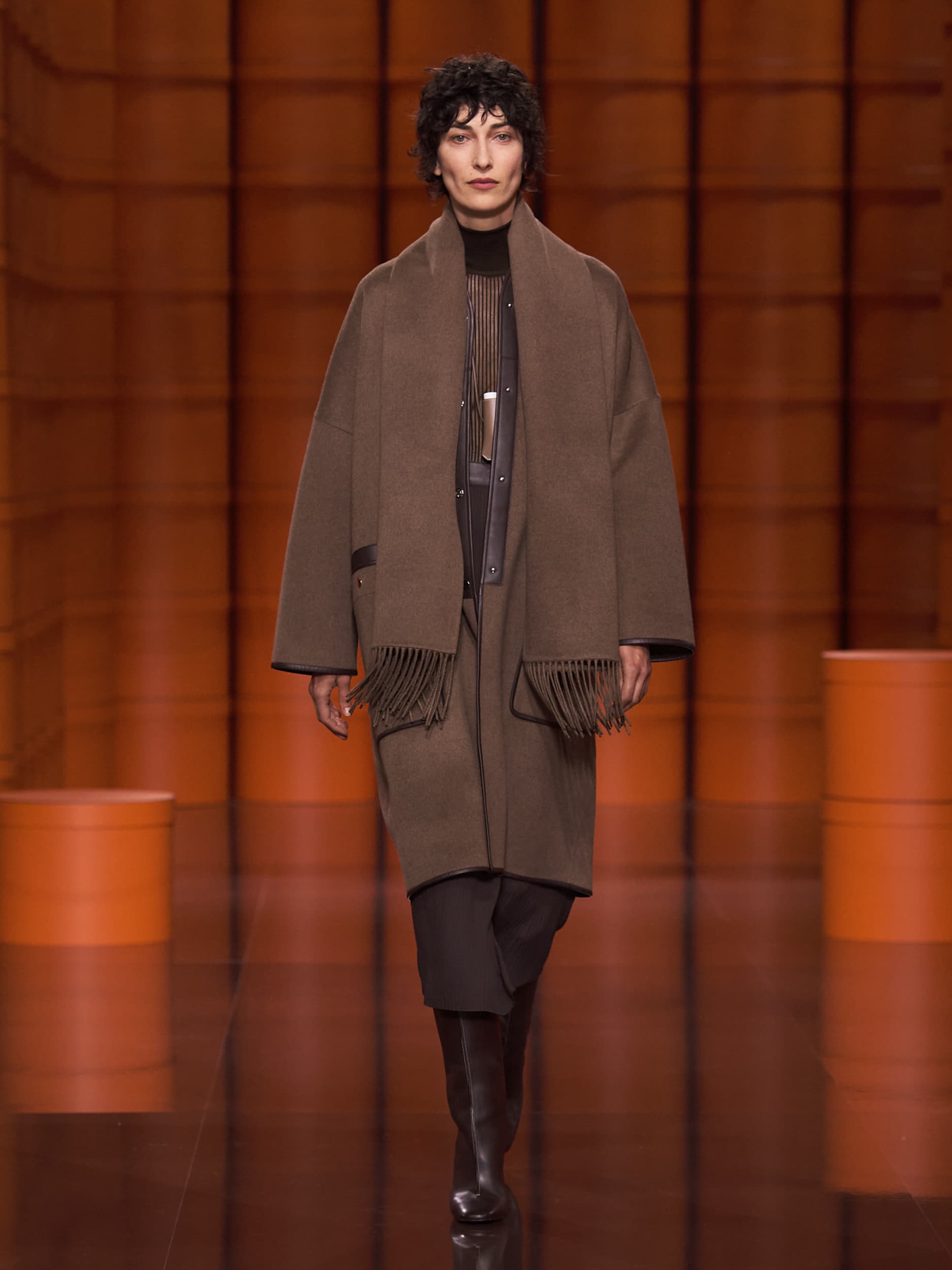
“It is important for this collection to incite the desire to wear the clothes. I lean towards materials that we’re able to express shelter, comfort, protection without forgetting the finesses, movement, sensuality,” the designer said.
At Hermès, a house founded in saddlery, movements are essentials, whether in life, on horses, or in clothes. It makes sense for dancers to wear these clothes as part of the NY street walk and the Shanghai troupe dynamics melding borders and minds in their exorbitant interactions.
What lies behind these clothes?
The clothes are lean and sporty, designed for comfort and movement with very little room for anything extraneous. This show’s opening look tells this season’s story – cotton denim zippered jacket with pockets topstitched in Tattersall checks and black lambskin collar with a funnel neck jumper and cigarette cut denim pants with lambskin belt. A streamlined silhouette focused on a wardrobe for today and tomorrow with the idea of ease and freedom at its core, like the black blouson with rivets detailing and technical cotton twill waterproof pants with white reflective bands on the legs.
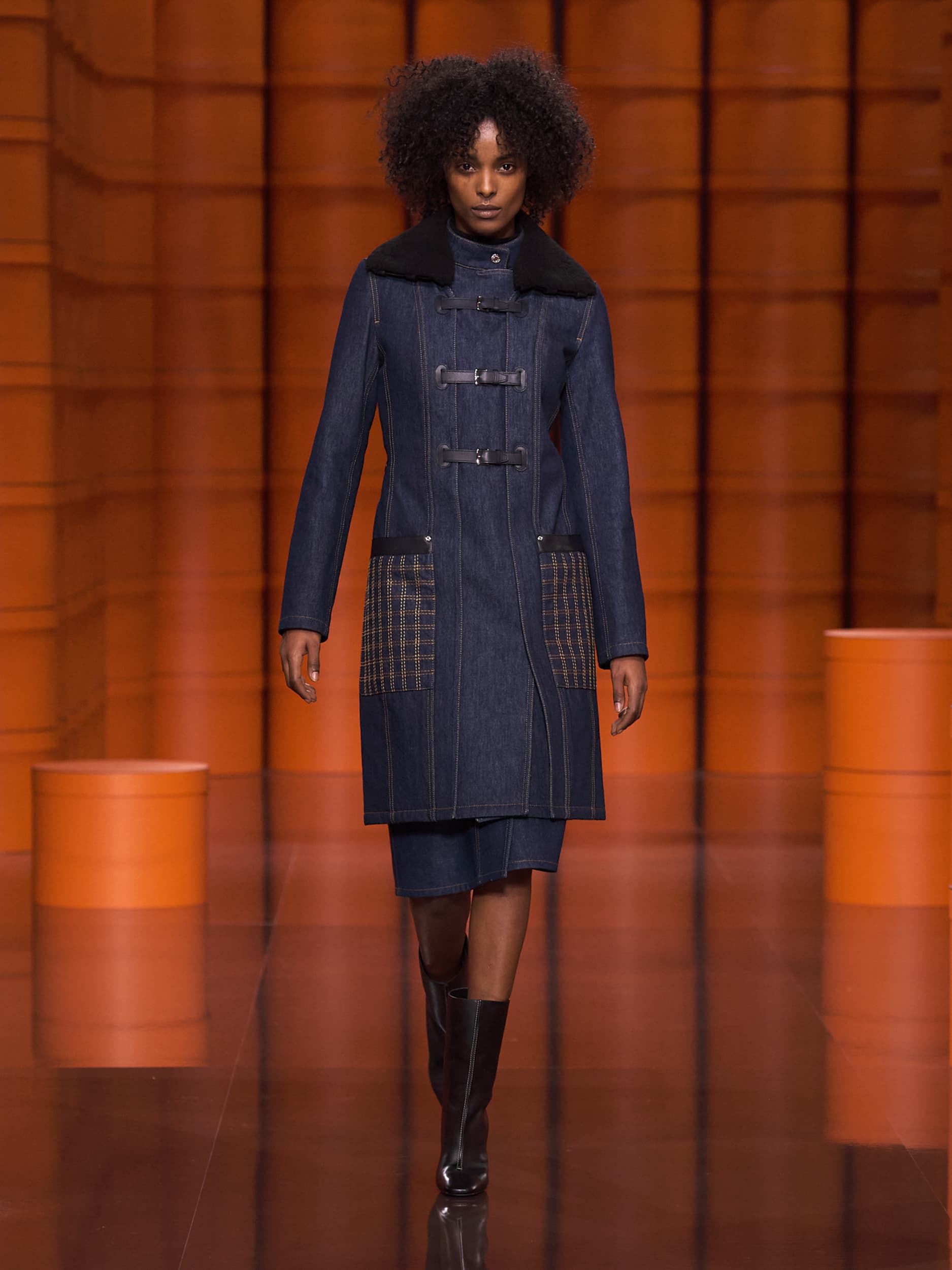
The denim equestrian long coat with topstitched pockets and a wrap skirt that followed reinforce this notion, after seeing the ease in which the dancers in New York moved in their chocolate skirts looks.
A red smocked polka dots dress in jacquard silk has slight and subtle pleating at the front and below the waistline to ease the body’s movements underneath. “I have a whole chapter on pleats, which work as a kind of second skin, liberating the garment, thus, in turn, liberating the body, allowing the women to live without that constraint,” Vanhée-Cybulski said of these pleats.
There are no trends here and no need for any.
Still, clothes are fabricated with the utmost care of the traditional artisanal crafts, especially in the leather treatments that manifested throughout the entire collection. The house artisans’ various leather treatments are unrivaled. Among the leather in this collection are felt sheepskin, full-grain calfskin, treated lambskin, double-face full-grain calfskin, glossy lambskin, Tadelakt calfskin, grained goatskin, Epsom calfskin, Swift calfskin, and grained smooth sheepskin.
As always, hardware from Hermès other métiers interact with the ready-to-wear, here lending the Clou Médor snap fastener of the clutch bag as snap closures for a brown goatskin patch pocket coat or on a black pleated wrap skirt.
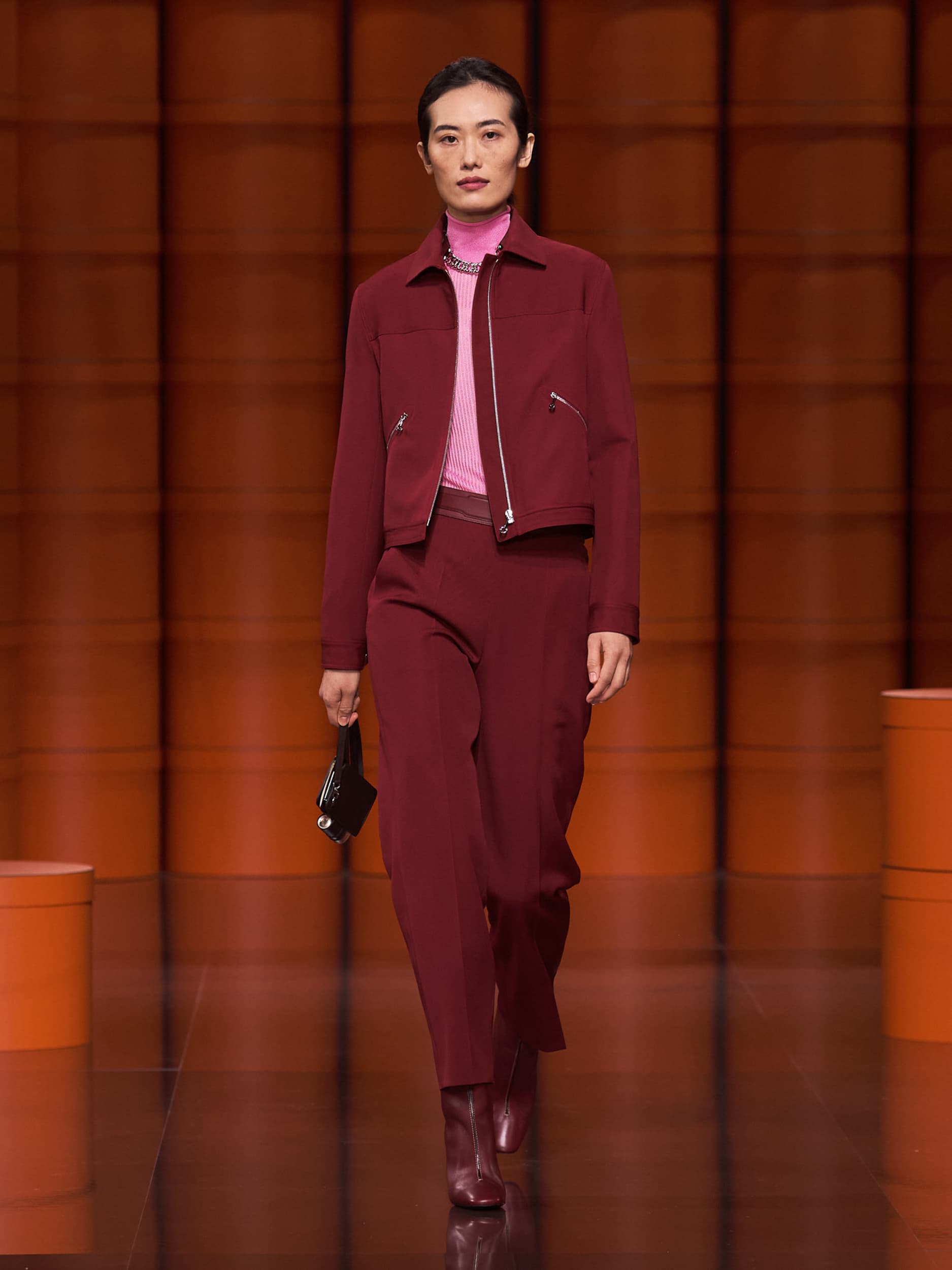
The very simple red zippered gabardine blouson with quilted lining, pink turtleneck, and gabardine straight-cut pants is a standout statement in modern elegance among the red technical twill trench coats the black glossy leather fitted sheath dress, and fringed cashmere jackets. Yes, there is a down puffer vest here too, but with a glossy lambskin finish at the top.
Artisanal expertise aside, fashion now has to be framed differently by offering other perspectives and considering different points of view. It is no longer the exclusive province of how the designer sees the collection.
As it seems impossible to go back to the old ways of showing fashion, this show addresses what needed to be changed as fashion moves ahead into an unexplored territory where creative solutions are implicit and vital.
Here, Hermès is positioning its fashion to take the lead with other authentic and meaningful art forms to rise along with this new manner to see clothes more humanly. The brand is establishing community through these new expressions to form new cultural currency with its specific viewpoints.
“The Hermès woman, in the public mind, is a French woman, but I believe it’s important for her to be universal,” Vanhée-Cybulski said.
Innovation remains at the center of the Hermès DNA.
It is also about innovating how to view fashion, view the creative process, and view the human process of crafts, all merging in the solitude of these three separate acts but bound so firmly together by the inventive staging of these timeless clothes.
